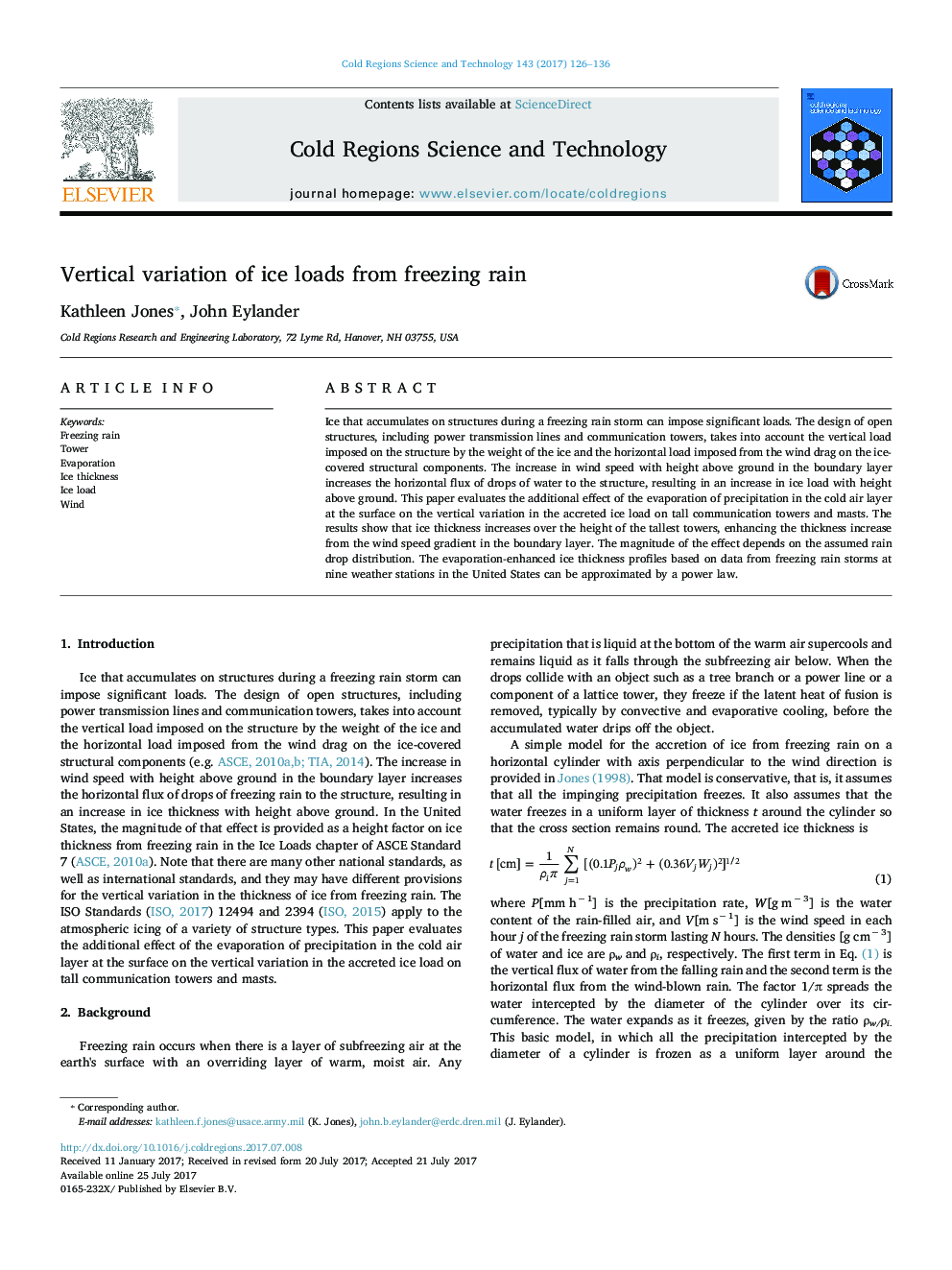| Article ID | Journal | Published Year | Pages | File Type |
|---|---|---|---|---|
| 5779386 | Cold Regions Science and Technology | 2017 | 11 Pages |
â¢Drops of freezing rain evaporate as they fall, decreasing the precipitation rate.â¢Wind speed increases with height in the boundary layer.â¢Accreted ice thickness depends on wind speed and the precipitation rate.â¢On tall structures ice thickness from freezing rain increases with height.
Ice that accumulates on structures during a freezing rain storm can impose significant loads. The design of open structures, including power transmission lines and communication towers, takes into account the vertical load imposed on the structure by the weight of the ice and the horizontal load imposed from the wind drag on the ice-covered structural components. The increase in wind speed with height above ground in the boundary layer increases the horizontal flux of drops of water to the structure, resulting in an increase in ice load with height above ground. This paper evaluates the additional effect of the evaporation of precipitation in the cold air layer at the surface on the vertical variation in the accreted ice load on tall communication towers and masts. The results show that ice thickness increases over the height of the tallest towers, enhancing the thickness increase from the wind speed gradient in the boundary layer. The magnitude of the effect depends on the assumed rain drop distribution. The evaporation-enhanced ice thickness profiles based on data from freezing rain storms at nine weather stations in the United States can be approximated by a power law.
